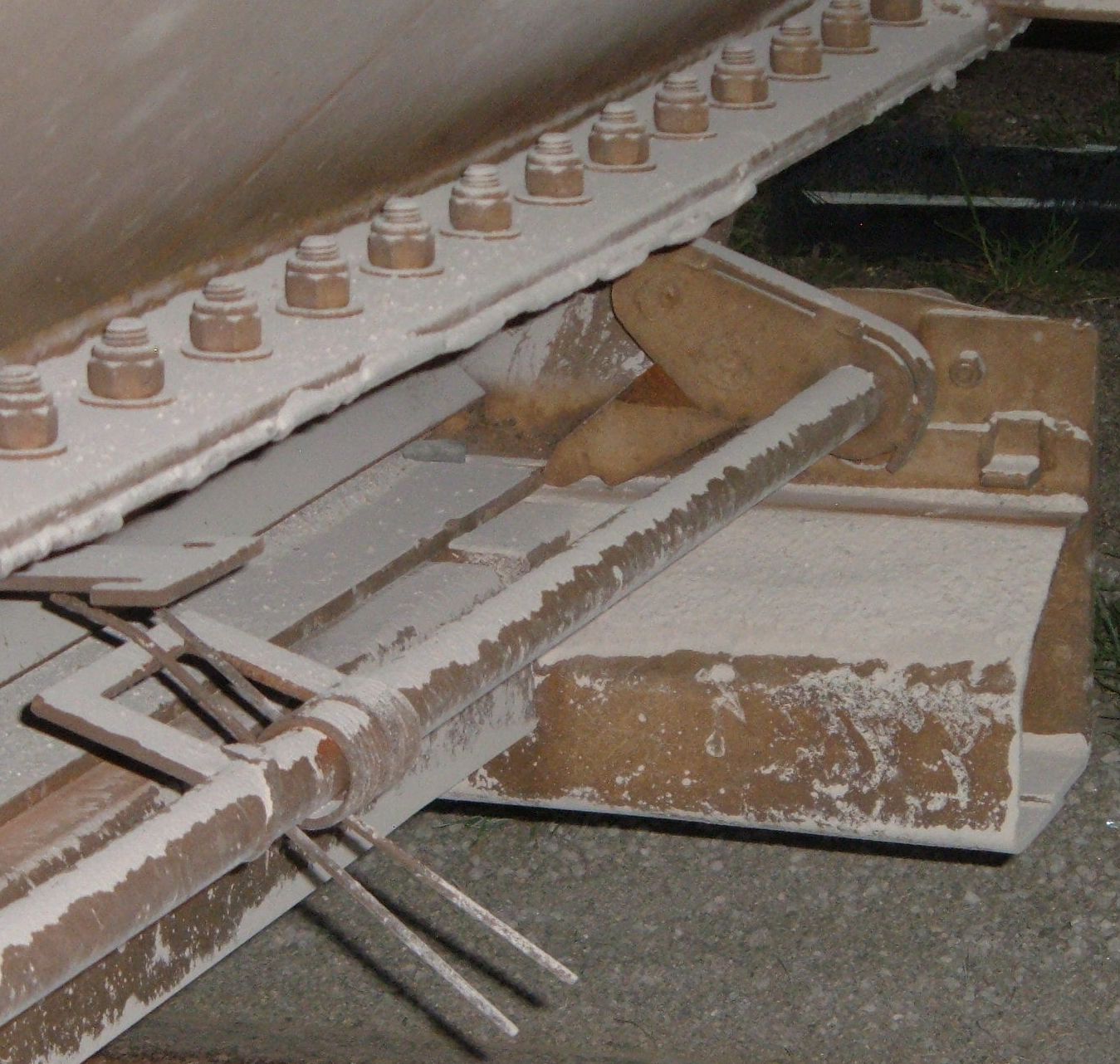
Door Opener
One might think of a hand applied lever mechanism to turn the clasp shaft against a spring loaded resting position. But that system, if it existed, might have been not sufficiently rugged to survive operation... as this seems all well worn, say, damaged in parts. But then, pls. tell: Is the counterweight an original part or a retrofit?
And, what is it, what you do to open the clasps?
Regards
R. ■
Re: Opening Railcar Hopper Gates
I don't think that spring does anything in the middle of the shaft. The counter-weight appears to have been added later. It prevents us from rotating the clasp bar over since it contacts the shaft for the door crank. If you look at the one picture for the far side of the gate - you can see a rest for the clasp if it flips over 180 degrees - just how do we do that?
Currently we are crawling underneath and shoving wooden wedges or rocks or whatever is kicking around in to hold the clasp open enough to allow us to crank the door open. ■
Laxative 'Springs' To Mind.
These cars have had some history.
There are two bosses which seen to line up to the mid plane of the original crank arm. Previously these bosses might have carried a lever mechanism to release the catches. There was a return spring which didn't stand the test of time.
A counterweight was added to replace the failed spring return. Your counterweight fouls the mainshaft quite intentionally so that the original flip over cannot occur and prevent a fail safe closure. With 180 degree arc the original spring was overstretched and eventually just couldn't pull the latches back into position. Luckily your guys left the original cranks intact.
If you can fit eyebolts into the bosses mentioned earlier then you can thread a wire rope to operate the crank from the other side of the winder shaft. Then you can clear the catch after a couple of winds; let go of the rope ring/handle and the counterweight will later return it all to normally closed.
Whatever you do: remember to take an oil can with you. It will be a first! ■
John Gateley johngateley@hotmail.com www.the-credible-bulk.com
Covered Hopper Railcar Discharge Gate Issues
My first question is what is the bulk commodity being discharged?
The only way you will be able to manage this is with a long chain
wrench with good chain to rotate the shaft that is attached to the
latching mechanism.
Are you using a torque multiplier with a ratchet wrench to open the rapid discharge gate?
I hope you are not using a 10 foot cheater bar to open the rapid discharge gates.
About the safety issue:
Is a locomotive used with the air hoses connected and the angle cocks open to actuate the
air brakes on the car as well as the hand brake or use wheel chocks and the hand brake
before you attempt to open the discharge gate? ■
Safety

Our procedures for this operation is the hand brake must be applied, the parking brake in the rail tram and the key removed. Still, these are just procedures that one must follow but I would prefer the task was completed from along the side of the rail car for ergonomics, safety and line of sight. The space is very tight so head injuries is a concern getting underneath as well as back / posture concerns. Material is cement ingredients and aggregates. We utilize a Martin or Martin competitor portable pneumatic gate opener for opening the gate, so having to manually do this job of removing the locks looks silly.
Currently the operator just lifts both clasps up one at a time and places a wedge underneath the clasp - letting go of the clasp it falls on to the wedge - if done properly, when the gate is being cranked open the clasp / wedge will stay put and ride over the gate.
Today I tried rotating the counterweight and its shaft until the counterweight contacted the shaft of the door opener (the gate shaft boss or cam was on the other side so this is the maximum the claspe axle could rotate - not far). The clasp came off the gate but now the nose of the clasp sits infront of the gate travel - hard to see in photo due to dust but the nose now engages to stop the gate, not the notch of the clasp ■




Opening Railcar Hopper Gates
Hello,
I have a question on how to open a particular style of hopper car discharge door.
The hopper car is normally a two door discharge for denser materials and this type
of door is the most common type that we see.
The door or gate is horizontal gear driven, but the clasps or travel locks are counter-weighted.
I would like to know how to open those clasps to allow us to open the gate?
Must be a better method than what we do to open those clasps?
Pictures attached.
Thanks
Attachments
dscf4474 (JPG)
dscf4475 (JPG)
■